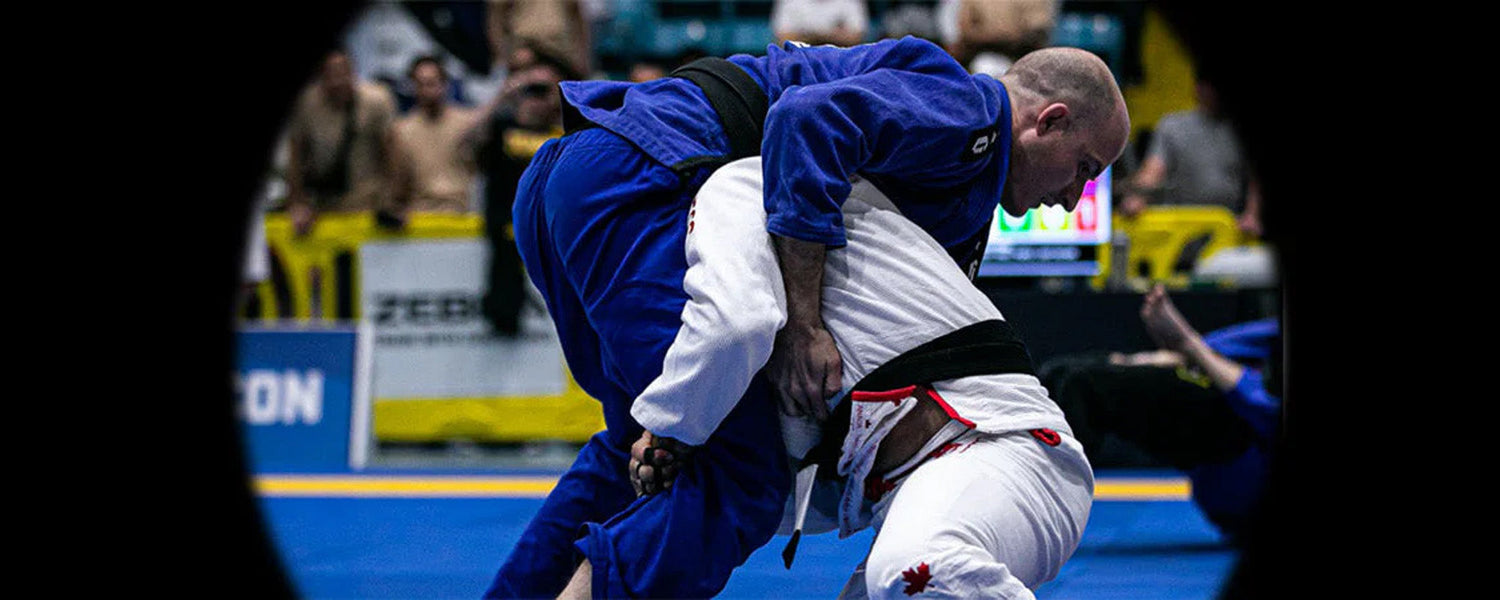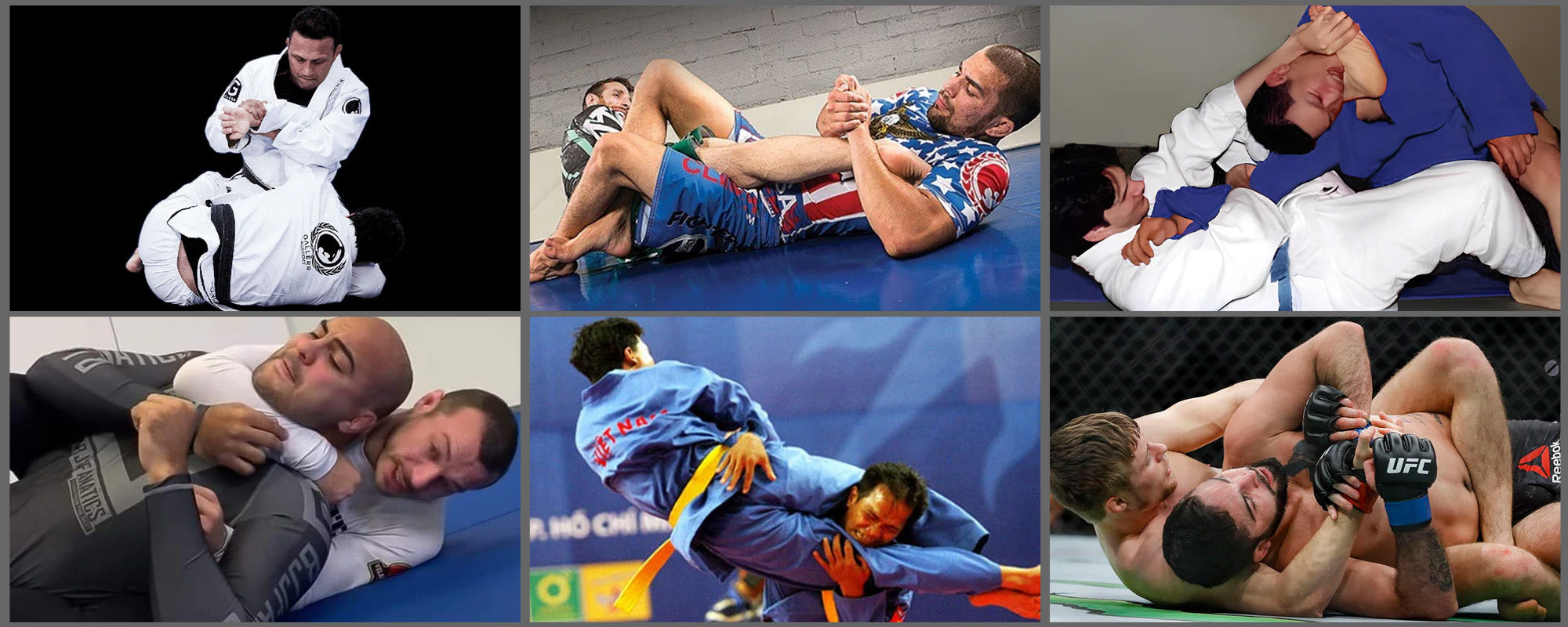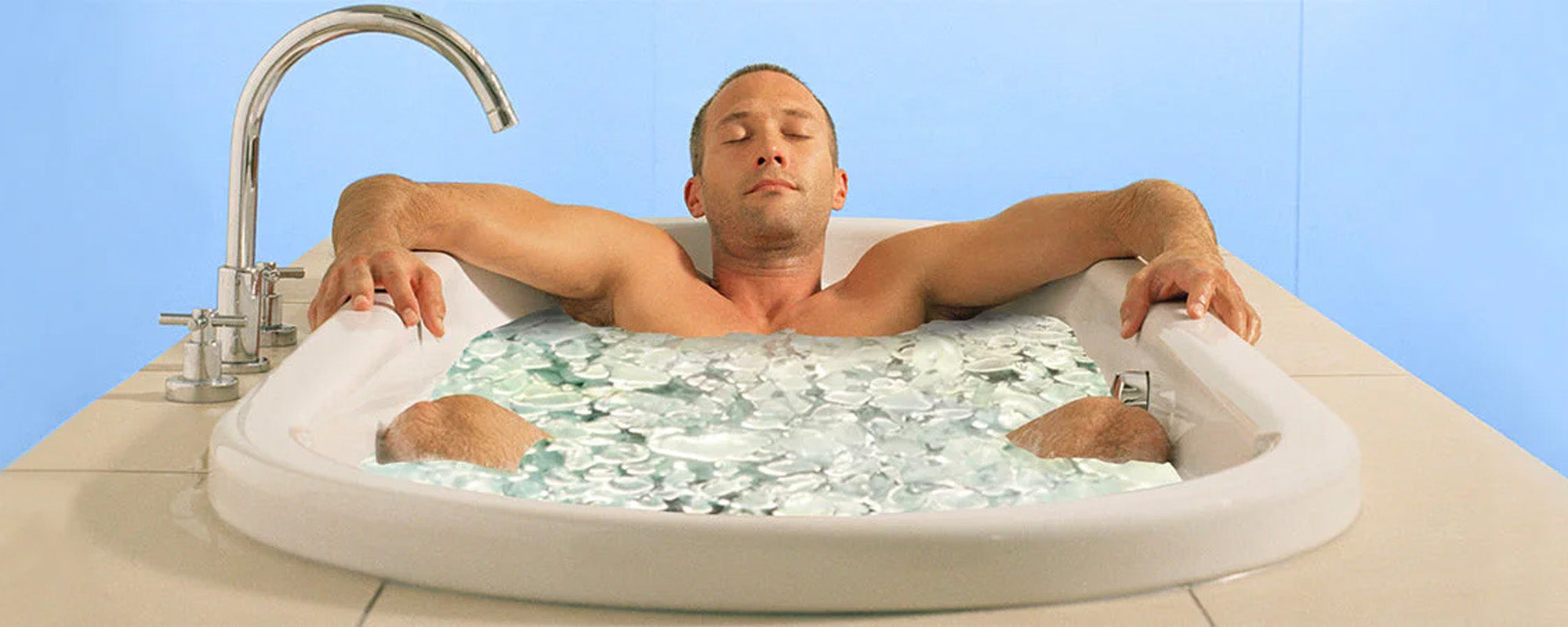Whizzer is one of the fundamental BJJ techniques that every beginner knows in wrestling. Its application differs in BJJ from wrestling. There are Gi grips involved in BJJ that are not present in wrestling. The involvement of Gi grips enhances the success rate of Whizzer.
BJJ Gi grips help in the proper finishing of Whizzer. The fighter defends himself/herself from the opponent’s takedown and can apply the technique. The sudden jerk makes your opponent vulnerable and hence, you can easily gain control.
There are different variations of Whizzer in BJJ. These variations aid the practitioner to escape from the dangerous moves of his opponent. Some of those variations include Knee Slice Pass, Closed Guard, and even from the Uchi Mata.
Table of content
1. Whizzer in BJJ
Whizzer is basically a wrestling move. Because of its effectiveness, it has been so effective in Brazilian Jiu-Jitsu. It is an essential move that even a beginner in wrestling knows.
It is similar to an overhook technique that a BJJ practitioner uses to defend a takedown when he/she misses the sprawl. When you lift your opponent’s armpit and shoulder with the overhook hold, it is called Whizzer. It is applied in response to the single-leg takedown attacks by your opponent. It is also called the defense from the single-leg takedown.
It is a multifaceted technique as it involves control of your opponent, allows you to attack, and also the reversal of the imposed techniques. Here you can control your opponent’s upper body as you have complete hold of his/her shoulders.
The practitioner isolates the arm of the opponent that gives him/her leverage over the opponent’s body. If you are stuck in any of your rival’s moves, Whizzer is the best option for you. It will most definitely change the game and turn it in your favor.
2. Origin of Whizzer
As Whizzer is originally a wrestling move, its origin dates back to the forefathers of wrestling. It originated in the United States. There are a lot of claims about its origin but there is no verification about them.
One of the misconceptions about Whizzer is that it is pronounced incorrectly. It is commonly called “the wizard” instead of Whizzer. This variation occurs when martial artists speak different languages and English is their second language.
3. Difference Between Whizzer & An Overhook
Whizzer and overhook, both seem pretty same but differ in techniques when applied. Often practitioners claim that both techniques are the same.
The Whizzer is used to pull your opponent up by using his/her shoulder and force their head towards the mat. It is an aggressive as well as a forceful move. It requires great core strength to successfully apply a Whizzer.
For an overhook, you have to push your opponent’s shoulder down and clamp the opponent tightly. You can then go for the wrist control of your opponent. After that, you will duck your opponent in your legs as your one foot is on his hips and with the knee, you restrict your opponent's movements. Now, you can cage your opponent’s head in your legs. With the help of your hands, you can push your opponent’s head down and he will tap out of the submission.
3.1. Video Link For Whizzer
For further help, you can watch the video.
3.2. Video Link For An Overhook
For further help, you can watch the video.
4. Whizzer Variations
Whizzer is a versatile move in BJJ. There are many variations that are used to escape the single-leg takedown. Once your opponent has a hold of your leg, you have to react immediately or else you would lose points against your opponent.
4.1. The Whizzer From Standing
The Whizzer from the standing position is an efficient move. It is the pure reversal of your opponent’s move. Your opponent is of the view that he/she can easily take you down by the single-leg takedown. Little does your opponent know that after the application of the Whizzer, the opponent is most likely to lose.
To apply the whizzer from the standing position,
- As your opponent has grabbed you by your leg, you must grab your opponent’s arm in such a way that his head is on the level of your chest.
- You must grab your opponent’s shoulder tightly and hip in.
- The hip must be in a way that your leg separates from your opponent’s body.
- It will imbalance your opponent as you will put your leg down that was initially in your opponent’s hands.
- Then you can move to the opposite side and easily escape your opponent’s single-leg takedown.
4.2. Knee Slice Pass
Knee slice pass is the pass in which you use your own knee to pin and slice through your opponent’s knee. But first, you have to control your opponent’s head and arm with the help of an underhook.
To apply the Whizzer from the knee slice pass:
- You must start from the knee slice position by gripping your opponent’s arm and lifting it up.
- By lifting the arm, you stopped your opponent from throwing his arm underneath your leg and with your other hand tightly grip the collar.
- Your opponent’s leg must be behind your back or else he will be able to reverse the situation.
- After that you can drop your hips to the mat and pull on the arm slide. And in this way, you can finish the pass quite efficiently and effectively.
4.3. Whizzer T-Step Uchi Mata
Uchi Mata is applied against bent-over postures in BJJ. It is a very broad posture as you can transition to other techniques quite easily.
To apply Whizzer T-step Uchi mata,
- You have to Whizzer one of your opponent’s arms and with your other hand grab your opponent’s tricep from the inside.
- After that rotate your far leg and create a hip rotation so that your opponent can not grab you tightly.
- Also, bring your other foot closer so it helps you make a T-shaped movement with your legs.
- And then you can take your opponent down in a single abrupt force. It will imbalance your opponent’s position and he will fall to the ground.
4.4. Switching Sides With Whizzer Sweep
You can apply Whizzer from the ground position also and then switch sides when your opponent is in a defensive mode from the Whizzer. It helps you to dominate over your opponent.
To apply Whizzer sweep by switching sides:
- You must set up the Whizzer when your opponent has put all his way back so that his whole body is staying in the back position.
- You can switch your hips by using your free hand and then wrap your opponent’s head in your hands.
- After that, you can turn your opponent to the ground position by using your leg that was initially under your opponent’s thigh.
- And then you are at the top of your opponent with your opponent’s back on the mat.
4.5. Cross Collar Choke With Whizzer From Closed Guard
Closed guard is an advantageous position in BJJ. Most submissions are applied easily from this position. The fighter can even gain control or escape from the opponent’s technique from this position.
To apply Whizzer from closed guard,
- As you are in a closed guard position, do not lie straight on the mat. Rather sit up and drive your arm underneath hence, forming a Whizzer.
- Grab your opponent via the cross-collar grip with your Whizzer hand.
- With your other hand, grab your opponent’s collar from the other side, behind the neck.
- If this position is maintained for a longer time, your opponent can easily duck his head to the other side and the submission won't be successful.
- So to avoid this situation, you must place your elbow as tight as possible. Your opponent won't fudge from this position.
- Then you can drive your elbow towards your opponent’s stomach and the opponent will tap out of the submission
5. Tips For Doing The Whizzer
5.1. Overhooking Above The Elbow
To ensure a perfect Whizzer so that your opponent does not break free from it, it is essential to overhook above your opponent’s elbow. If the overhook is below, your opponent will most definitely be free as you will have no control over your opponent. With no arm control, your opponent will gain the dominant position.
5.2. Pulling The Opponent’s Arm
Once you have successfully overhooked your opponent’s arm, pull it in the upward direction. It will tighten the whole overhook.
5.3. Strong Standing Position
Make sure that your feet are placed firmly on the ground. It is because once you have established the Whizzer, your opponent will try to get free.
5.4. Hooking Your Feet
You apply Whizzer when your opponent tries to take you down with a single-leg takedown. It is important to hook your raised leg in between your opponent’s leg or else it will become easy for your opponent to take you down. Also, your other foot must be placed tightly on the ground. It will strengthen your base.
5.5. Focus On Grips
When you have established a Whizzer make sure that before lifting your opponent up, you must break his grip on your leg. Also, make your own grips strong.
6. How To Defend Against a Whizzer?
Defending a Whizzer is important because if applied by your opponent it can lead to your defeat. If Whizzer is applied effectively, it is hard to escape. Still there are some techniques that can be applied to break free from it.
If both knees of your opponent are close to you, you can grab the opponent’s knee and throw your opponent to the other side, hence breaking free from his Whizzer. Or you can also take your right arm that is trapped in the whizzer and limp it out of your opponent’s grip. You can also circle your arm out of the whizzer and then lock your opponent’s back with your hands.

7. FAQs
7.1. Why Whizzer Is Important In BJJ?
Due to the success rate of Whizzer, it is effectively used in BJJ. It is quite similar to overhook. The only difference between the two is that in Whizzer you push your opponent’s shoulder down. And in overhook, you pull the shoulder up.
7.2. Why are Wrestling Moves Applied in BJJ?
Wrestling is a quite different and versatile martial art. It uses punches and kicks that are illegal in BJJ. Some of the wrestling moves are applied in BJJ because of the success and submission rate. For example, Whizzer is primarily a wrestling technique but is used in BJJ.
8. Conclusion
Whizzer is a wrestling technique similar to overhook in BJJ. It is applied when the fighter gets caught in the single-leg takedown by the opponent. But it differs from an overhook because of the push and pull movement. It is a beneficial and extremely helpful move for the BJJ practitioner. It saves the fighter from the brutal takedown.
Photo Credit: @evolve-university













Leave a comment
This site is protected by hCaptcha and the hCaptcha Privacy Policy and Terms of Service apply.